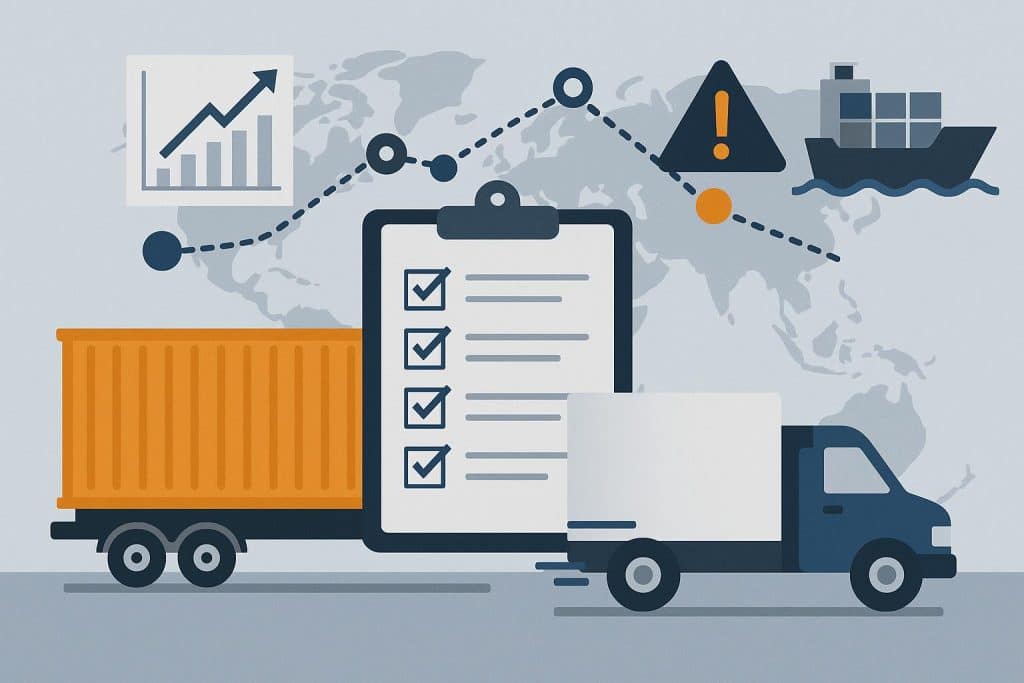For decades, the primary goal of logistics was simple: cost reduction. Supply chains were engineered to be as lean and cheap as possible. Then, a global pandemic, port blockades, and geopolitical conflicts exposed a deep flaw in that model. A lean supply chain is often a brittle one. When a significant disruption in the supply chain occurs, it shatters.
Today, the focus has shifted from “cheapest” to “most resilient.” The new goal is building a supply chain that can bend without breaking. This requires a new way of thinking about managing supply chain disruptions. Below are five practical logistics strategies to help you weather the next inevitable storm.
1. Diversify Your Carriers and Forwarders
Relying on a single ocean carrier or third-party logistics (3PL) partner creates a massive single point of failure. It may simplify invoicing, but it exposes your entire operation to their specific problems, be it labour strikes, financial instability, or route congestion.
Spreading your freight volume across a diversified portfolio of carriers and forwarders is a foundational step. When one partner’s shipping lane is congested or they are fully booked, you can pivot your volume to another. This simple diversification is a powerful way to prevent supply chain disruptions from halting your entire operation.
2. Embrace Multi-Modal Transport
Over-reliance on one mode of transport, like ocean freight, makes you extremely vulnerable. When ports clog up, as they did repeatedly in 2021 and 2022, or when container rates spike, your goods are stuck.
A resilient supply chain has the built-in flexibility to switch between air, ocean, rail, and road. This capability allows you to make strategic trade-offs. You can continue to ship low-priority goods via the cheapest (if delayed) ocean route while shifting high-value, high-demand products to air freight. This agility is key to mitigating supply chain delays for your most important customers.
3. Distribute Your Inventory Strategically
The “single massive distribution centre” model is highly efficient. It is also highly risky. A fire, flood, extreme weather event, or localised labour dispute can shut down your entire fulfilment network in an instant.
A more resilient approach involves a “hub-and-spoke” model or multiple regional distribution centres. Holding inventory in several smaller, strategically placed warehouses serves two purposes. It places goods closer to your end-markets, reducing last-mile costs. It also ensures that a localised disruption in one part of the country doesn’t stop all your sales.
4. De-Risk the Border with Compliance
Geopolitical turmoil is now a primary logistics risk. A new tariff, sudden sanction, or updated trade rule can stop goods at the border with no warning. Your cargo can become collateral damage in a trade dispute.
This is why robust customs trade compliance is no longer just a legal function; it is a core resilience strategy. A minor mistake in product classification or a missing document on a commercial invoice can lead to massive penalties and indefinite holds. Ensuring your trade data is 100% accurate prevents your goods from being singled out for inspection. For businesses managing complex cross-border trade, especially in key regions, many rely on expert partners like CrimsonLogic North America to navigate these rules. A compliant supply chain moves smoothly, while a non-compliant one is the first to be stopped.
5. Invest in Proactive Visibility
You cannot manage what you cannot see. Many businesses today still operate in the dark, only finding out about a critical delay after it has already happened. By then, it’s too late.
Resilience requires moving from passive tracking to proactive exception management. This means investing in technology that unifies data from your carriers, your warehouse (WMS), and your transport system (TMS). This single pane of glass allows your team to see a potential delay before it becomes a catastrophe. This early warning gives you the time to activate your other strategies, like re-routing a shipment or switching transport modes.
Building Resilience is an Ongoing Practice
Building a resilient supply chain is not a one-time project; it is a fundamental shift in mindset. The old model of “lean at all costs” has proven too brittle for today’s volatile landscape. Answering the question, “How can we make our supply chain more resilient to disruptions?” begins with accepting that stability and flexibility are now as important as cost.
A truly resilient supply chain is an agile one, built on the strategies discussed. It moves beyond single-source dependencies by diversifying carriers and embracing multi-modal transport. It reduces risk by distributing inventory geographically. Most importantly, it uses data as its core defence—leveraging proactive visibility to spot trouble early and ensuring strict customs compliance to move goods smoothly across borders.
By embedding these practices into your daily operations, you build more than just a supply chain; you build an operation that is prepared to absorb the shock of the next disruption in the supply chain and keep moving forward.
